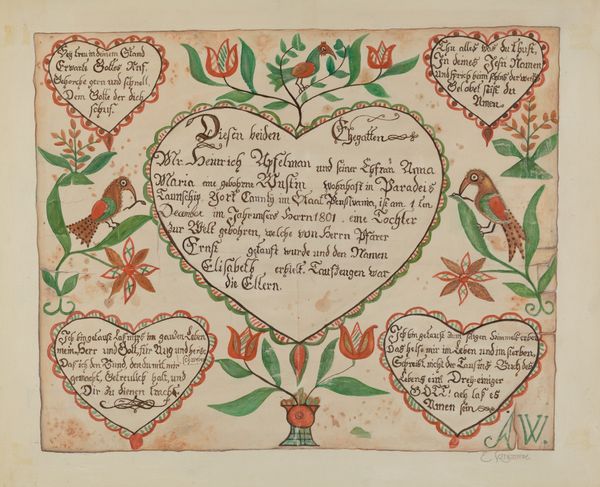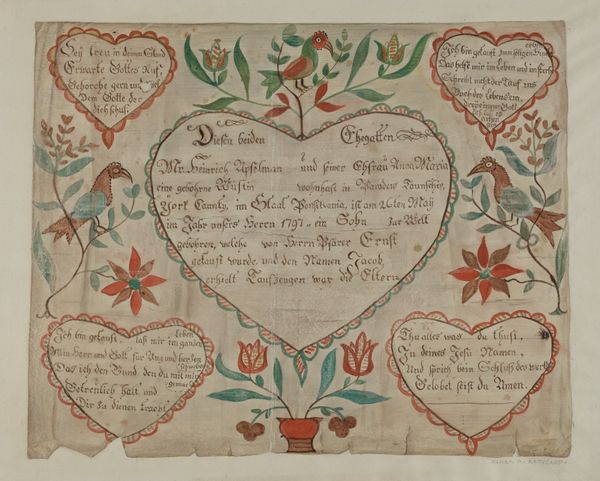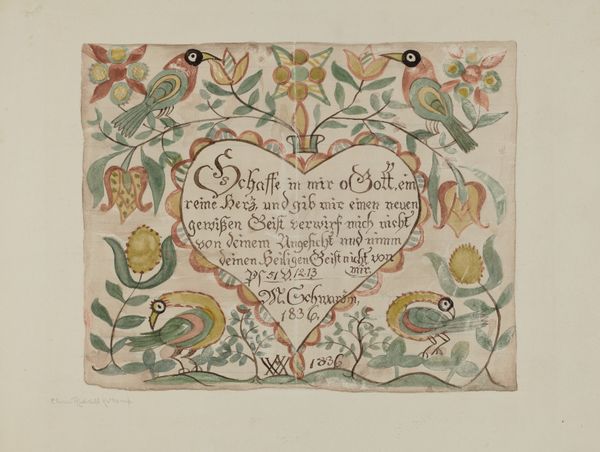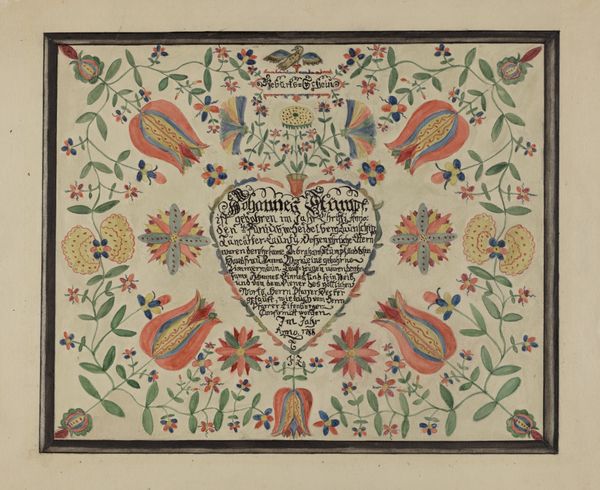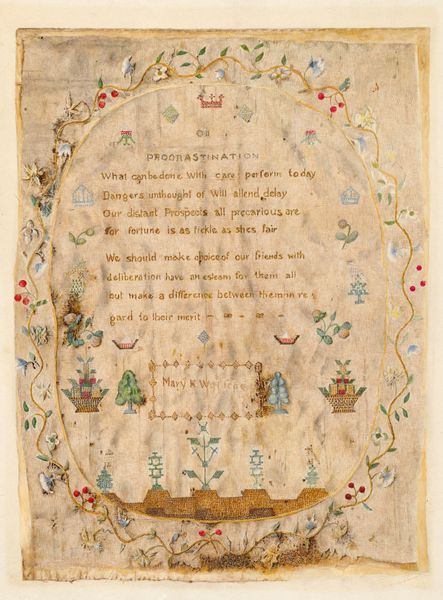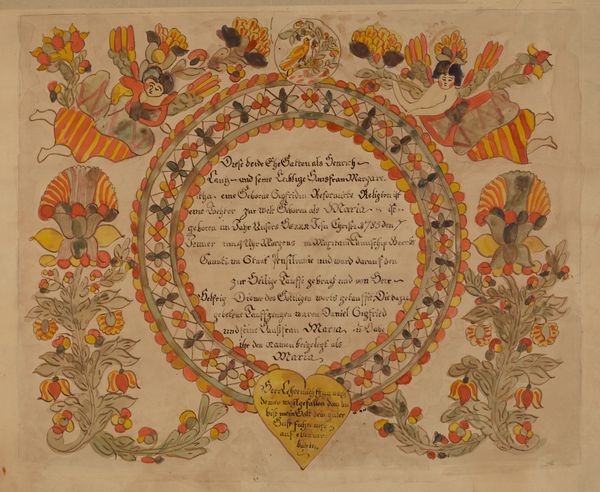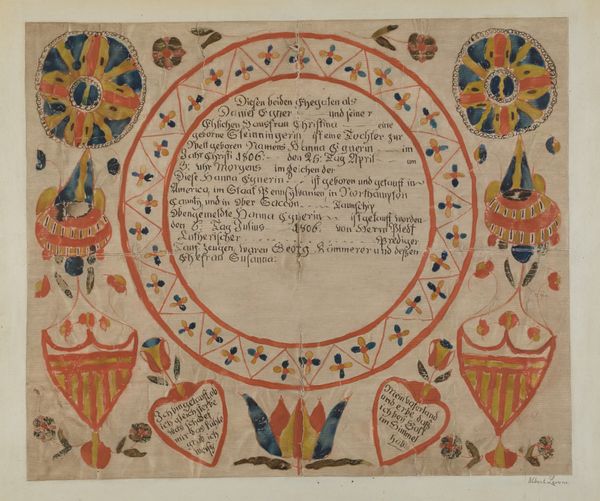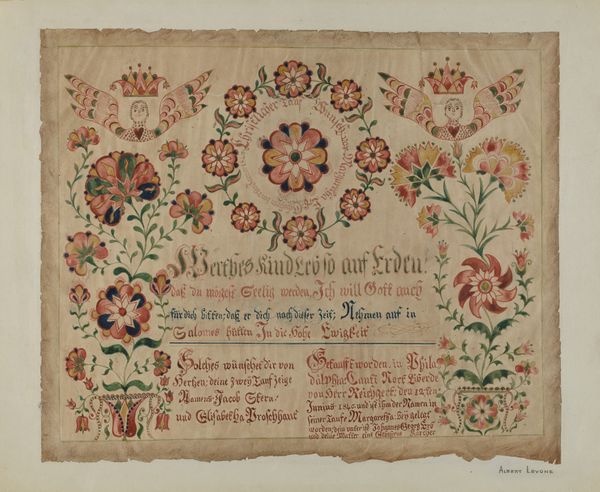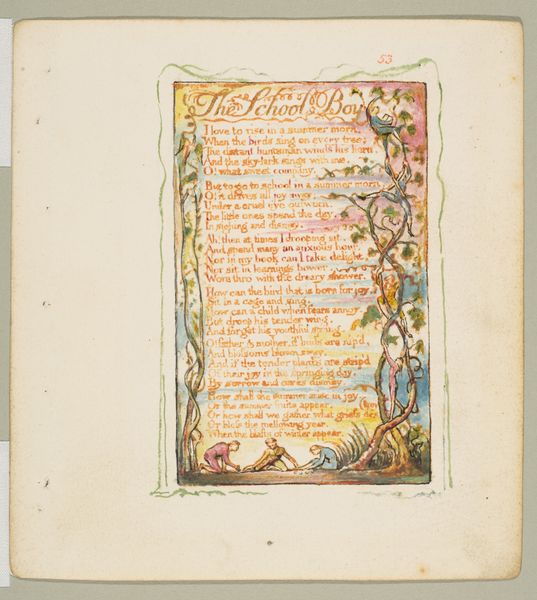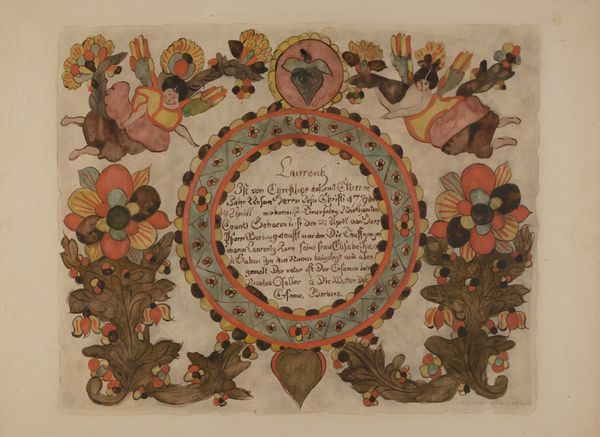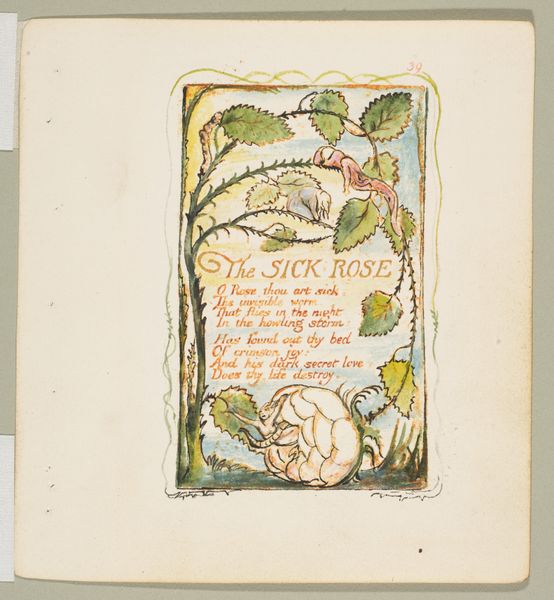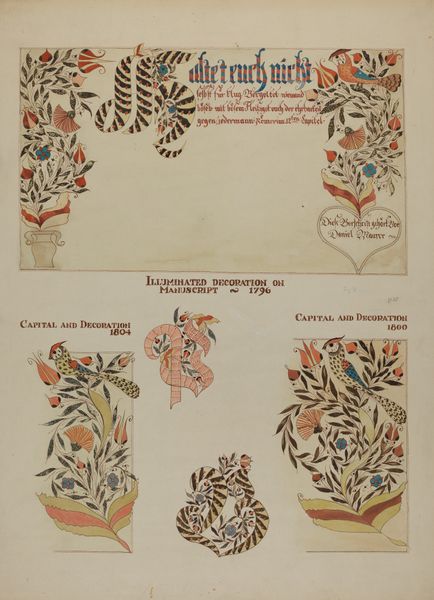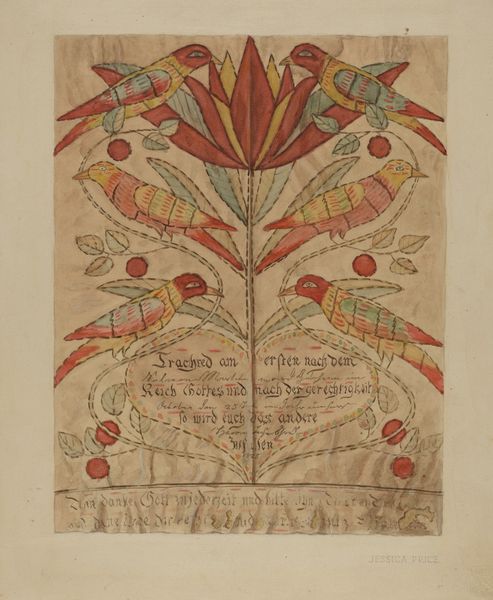
drawing, print, textile, paper, watercolor
#
drawing
#
water colours
# print
#
textile
#
paper
#
watercolor
#
folk-art
#
miniature
#
watercolor
#
calligraphy
Dimensions: overall: 42 x 51.2 cm (16 9/16 x 20 3/16 in.)
Copyright: National Gallery of Art: CC0 1.0
Editor: This is "Fraktur" by Richard Barnett, likely created between 1935 and 1942. It appears to be a print with watercolor and ink on paper, resembling a decorative document. I’m immediately drawn to the folk-art style and miniature details. What can you tell me about it? Curator: It’s interesting how Barnett revives Fraktur, a Pennsylvania German folk art form, so late – well into the 20th century! This connects to the broader history of American folk art, doesn’t it? There's a rediscovery of traditions during the interwar period, potentially as a way to reinforce cultural identity during times of rapid change and, globally, rising facism. How do you interpret the prominent use of text? Editor: I noticed the German script within the heart shapes and surrounding the central vase. The text seems integral, almost like the images are illustrating a story or a ceremony, maybe like a baptism or birth announcement. I was also wondering, who was this artwork meant for? Curator: Exactly! "Geburts- und Taufschein" translates to "Birth and Baptismal Certificate." Its public role served as important cultural document, formally recording major life events in a community. Considering that Richard Barnett's art revives this public record, one can ask why an early 20th-century artist return to this style? Who would be interested in buying a vintage rendering of what was already obsolete by then? The placement of angels and birds is conventional; have you noticed any atypical symbolism, perhaps reflecting contemporary sensibilities? Editor: That’s a fascinating detail! The style and subject feel so old world, that it’s really odd knowing this was made just before WWII. I hadn’t thought about it as a deliberate choice and potentially appealing to collectors looking for reminders of a specific ethnic and cultural identity. Curator: Precisely! Art is never made in a vacuum, but always speaks to—and out of—specific circumstances, so thanks for noticing. Editor: I will never see Folk Art the same way now. It’s not just about aesthetics but about preserving history.
Comments
No comments
Be the first to comment and join the conversation on the ultimate creative platform.

